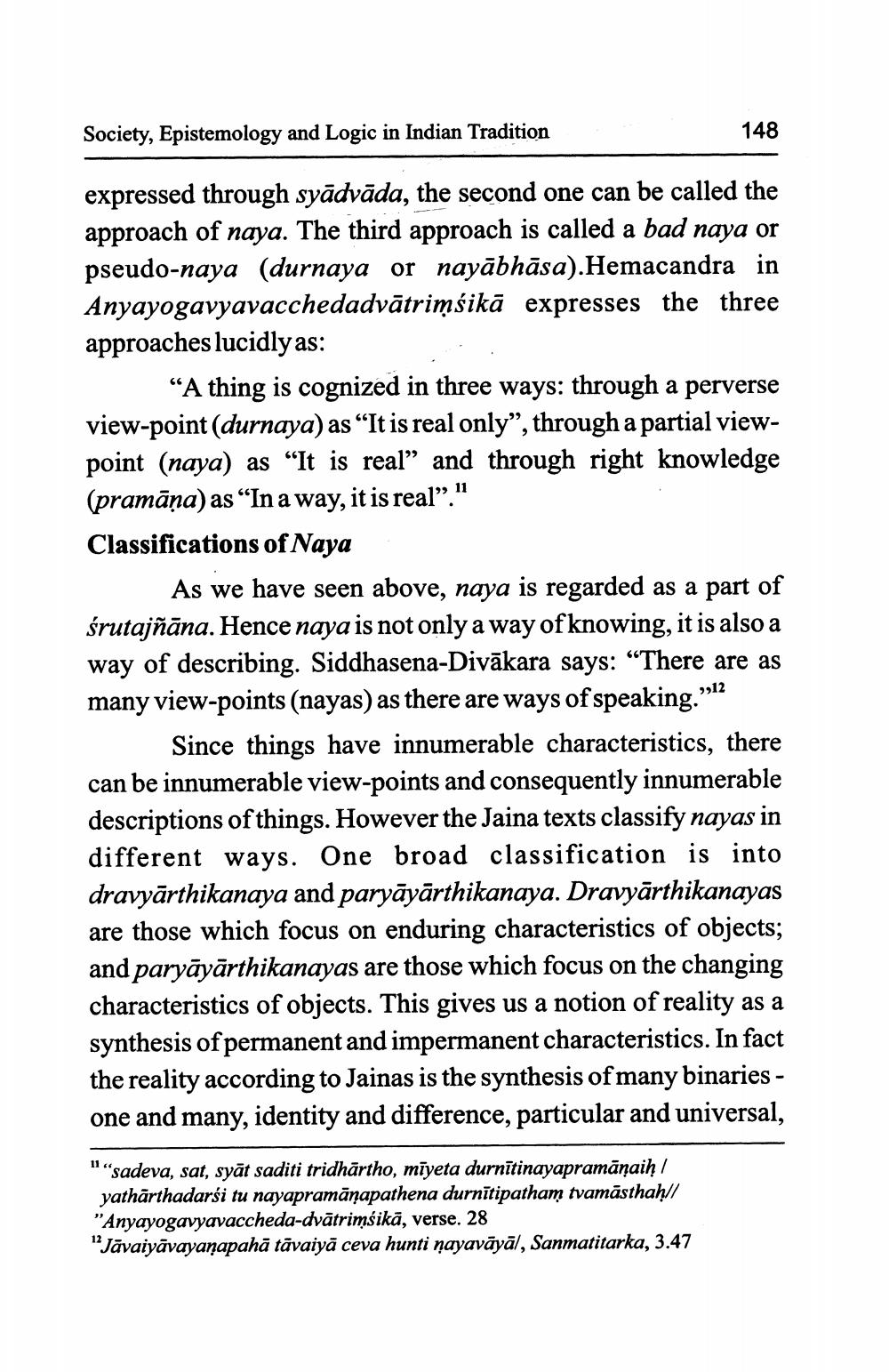________________
Society, Epistemology and Logic in Indian Tradition
expressed through syādvāda, the second one can be called the approach of naya. The third approach is called a bad naya or pseudo-naya (durnaya or nayābhāsa).Hemacandra in Anyayogavyavacchedadvātrimśikā expresses the three approaches lucidly as:
148
"A thing is cognized in three ways: through a perverse view-point (durnaya) as "It is real only", through a partial viewpoint (naya) as "It is real" and through right knowledge (pramāṇa) as "In a way, it is real"."
Classifications of Naya
As we have seen above, naya is regarded as a part of śrutajñāna. Hence naya is not only a way of knowing, it is also a way of describing. Siddhasena-Divākara says: "There are as many view-points (nayas) as there are ways of speaking.'
,12
Since things have innumerable characteristics, there can be innumerable view-points and consequently innumerable descriptions of things. However the Jaina texts classify nayas in different ways. One broad classification is into dravyārthikanaya and paryāyārthikanaya. Dravyarthikanayas are those which focus on enduring characteristics of objects; and paryāyārthikanayas are those which focus on the changing characteristics of objects. This gives us a notion of reality as a synthesis of permanent and impermanent characteristics. In fact the reality according to Jainas is the synthesis of many binaries - one and many, identity and difference, particular and universal,
""sadeva, sat, syat saditi tridhartho, miyeta durnitinayapramāṇaiḥ/ yatharthadarsi tu nayapramāṇapathena durnītipatham tvamasthaḥ// "Anyayogavyavaccheda-dvātrimśikā, verse. 28 "Javaiyavayaṇapahā tāvaiyā ceva hunti nayavāyāl, Sanmatitarka, 3.47




